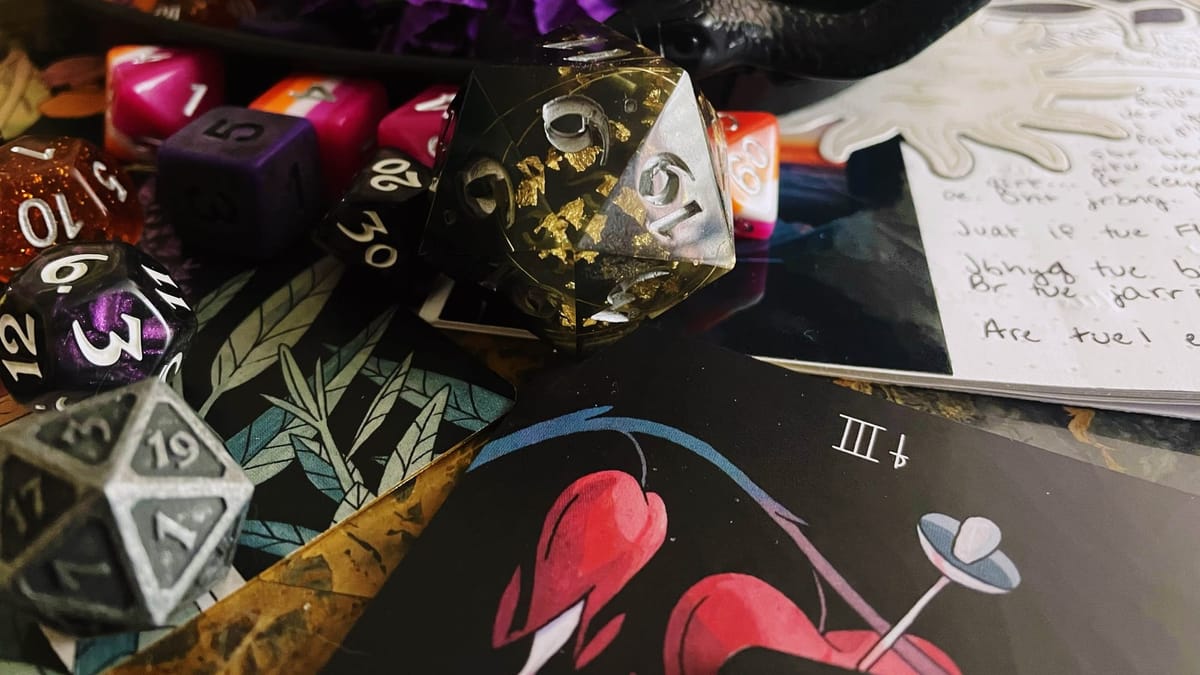Leaving pieces of my heart on the table
Using physical ephemera to differentiate between in-character and out-of-character relationships helps me be present with both of my partners.

“If I’m getting on my knees, it’s not going to be to beg,” I spat in a ridiculous New York accent, fast and low without thinking about it. My GM, K, tripped over their words as they responded in character and my cheeks flushed with pride, pleased that I’d thrown her off her game for a moment. Viewers keysmashed in the chat, typing my and my character’s name in all caps. The scene went on for a while longer, my hard-hearted assassin unable to resist picking at the scab of seeing her ex again.
It was an intense, one-on-one exchange between me and the GM, the rest of the cast looking on with wide eyes and mouths rounding like o’s every time we reveal something new. Nearly everything was improv, canonized on the tips of our tongues and teeth. After the session, as the full cast exchanged compliments and critiques, K referred to this moment as sparring. It took a few weeks for me to realize why that gave me butterflies whenever I thought about it—especially since I was already dating L at the time, whose relationship to the table was as a viewer, rather than a player.
Now, two and a half years into a closed polyamorous relationship with both of them, it’s obvious I had already fallen in love twice over. Acknowledging that and then learning to navigate a new relationship structure was hard, but worth it—so, so worth it.
Although there’s always a piece of me in my characters (even if I don’t realize it at first), I strive to create personas with vastly different experiences than my own, because the joy of roleplay games for me is deeply rooted in exploring, experimenting, and making choices I wouldn’t ever make in real life. Falling in love with someone for real at the table was a new experience, one mired in uncertainty and anxiety—but also wrapped in the surprising freedom of learning how to love more than one person at a time, in a way that felt safe for the three of us and for the friends with whom we shared community.
Perhaps unsurprising to anyone who knows me and how much I love things, the key to healthily growing our nonfiction relationships was collecting and ritualizing physical ephemera specific to the fictional world of the game, so the real world was separate and free of bleed.
Items played (and continue to play) an integral role in separating who we were from who our characters were; how we felt, from how they felt.




